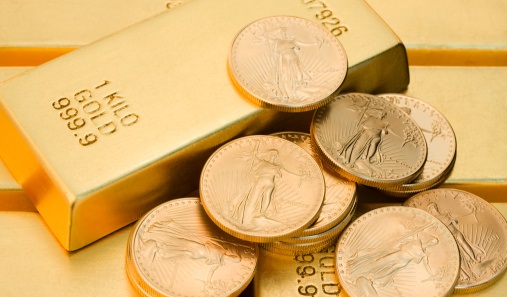Spot gold prices saw rollercoaster price action towards the end of last week, falling on Thursday from above $1900 to hit weekly lows in the $1850s by early on Friday, with the losses at the time driven by what seemed to have been a build up in expectations for a stronger Friday US jobs report (driven by strong ADP and ISM data). However, last Friday’s US jobs data ended up disappointing expectations which saw gold reverse much of Thursday’s move lower. However, spot prices have not been able to convincingly reclaim the $1900 level in recent days and ahead of the next batch of key US data that could really shift the dial for the precious metal (tomorrow’s May US CPI report), gold is consolidating in the $1890s. Technicians will be looking at the 21DMA (which acted as support last week and currently resides just under $1880) and last week’s lows in the $1850s as key levels of support, while the psychological $1900 level and recent highs at around $1916 are the key levels of resistance to watch.
In terms of how gold might react to tomorrow’s key US inflation numbers; analysts suspect that even if the inflation numbers do come in much hotter than expected (for reference, consensus expectations are for headline CPI to come in at 4.7% YoY and Core CPI to come in at 3.4% YoY), the market impact might not be too significant. That is because many analysts suspect that markets are currently buying into the Fed’s argument that the current spike in inflation over the coming months is set to be “transitory” and that hotter than expected inflation numbers in the short-term will not cause the Fed to deviate from this assessment. In other words, markets need not worry about inflation that is a little higher than expected in the short-term as this will not worry the Fed enough to push them to begin tightening monetary policy more quickly than markets currently expect, given that the bank does not expect high inflation to last. According to this line of thinking then, a hotter than expected inflation report is unlikely to cause to dramatic a reaction, while a cooler than expected inflation report would have the greater risk of provoking a volatile market reaction. That is because softer than expected inflation is likely to “vindicate” the Fed’s current patient and very dovish approach to policy (one where it has basically been ignoring inflation and focusing on the large amount of economic slack that remains). Specifically to gold, according to the above line of thinking towards tomorrow’s inflation report, a hotter than expected report might provoke mild selling, but a cooler than expected report could propel the precious metal back above $1900.
Proponents of the argument that markets are likely to be unfazed by a hotter than expected inflation report tomorrow might point to recent price action in bond markets for evidence; ahead of tomorrow’s data, which is expected to see the YoY rate of headline and Core CPI rise to multi-decade highs, bond yields have been dropping sharply, driven primarily by a decline in inflation expectations. Since the start of the week, US 10-year bond yields have dropped from close to 1.60% to current levels around 1.50%, driven mostly by a drop in 10-year break-even inflation expectations from 2.4% to 2.33% over the same time period. This could be taken as evidence that markets becoming increasingly confident in the Fed’s argument that the spike in inflation is going to be transitory. A quick explainer to anyone confused by the above bond market references; bond yields can be driven higher or lower by changes in underlying “real” yields (i.e. inflation expectation adjusted yields) or by movements in inflation expectations (which in the US are calculated by subtraction the yield on inflation protected bonds, such as the 10-year TIPS, from nominal bonds, such as the normal 10-year note).
Note that not all analysts agree with the assessment that markets will be able to take such a calm view on any potential hotter than expected inflation report tomorrow. Whilst recent bond market price action does seem to support the view that the market is not too worried about inflation right now and has been becoming increasingly confident in the transitory argument, some analysts been keen to remind people just how quickly things can change. For example, perhaps a much hotter than expected inflation report either 1) triggers heightened worries amongst market participants that the Fed is wrong in its assessment on the transitory nature of inflation or 2) gets the Fed worried that it was wrong and that a change in policy (i.e. bringing forward monetary tightening) is needed.
Both outcomes could have drastically different implications for gold. The former outcome (an increase in fears that the Fed is making a mistake in essentially ignoring inflation) could be massively bullish for gold as it would 1) put real yields under pressure as inflation expectations begin to rise again (gold has a negative correlation to real yields) and 2) slaughter the US dollar as investors shift their portfolio allocations to other countries with a better real yield (gold has a negative correlation to the dollar as well). In terms of how to trade such an outcome; a sign that markets are showing fear of a Fed mistake on inflation would be a drop in real yields/rise in inflation expectations in wake of a hotter than expected US inflation report – this would be a bullish signal for gold.
Conversely, if the latter happens in wake of a hotter than expected CPI report (i.e. the Fed realises that it has made a mistake), the first thing to note is that we actually would know that the Fed’s thinking has changed until next week’s FOMC rate decision (Fed members are in blackout, i.e. not allowed to speak publicly, until then). If the Fed announced a hawkish pivot to combat inflation next week (i.e. QE tapering sooner than the market expects), this would be massively bullish for real yields and the dollar and would see gold slaughtered. But most analysts suspect the chances of this are low.
The bottom line is that it is tough to judge how the market and gold might react to tomorrow’s US inflation data if it comes in much hotter than expected. It all depends on 1) whether markets continue to buy the Fed’s transitory story and 2) whether the Fed remains confident in its own transitory story. Perhaps the easier market reaction to judge is how gold might react to a softer than expected US inflation report; as noted above, cooler than expected inflation is likely to 1) make FOMC members who have been playing down inflation fears feel vindicated and even more confident that their transitory argument is correct and 2) relieve pressure being felt by core FOMC members to appease the hawkish calls by some of the bank’s fringe members to begin the QE tapering process. In other words, cooler than expected inflation has dovish implication for Fed policy and thus should be bearish for real yields, for the dollar and thus bullish for gold.




